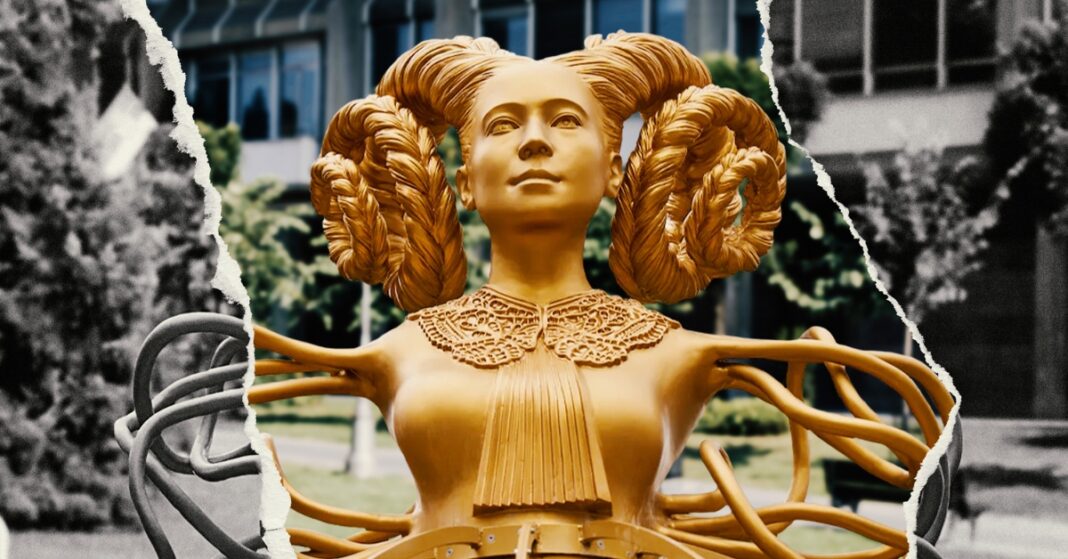An artist’s talk and opening ceremony for a temporary 18-foot statue was postponed by the University of Houston after anti-abortion groups called the statue “satanic” and threatened to protest the events.
The sculpture, called Witness, had already been installed near the Cullen Plaza fountain on the UH campus. A university spokesman said the meeting with the statue’s author, Pakistani-American artist Shahzia Sikander, would be postponed due to “unavailability of all parties.”
The UH posted a document on its website saying that Witness represents “the courage, fluidity and resilience of the feminine,” but acknowledged that the statue was offensive to some people. Sikander, in a separate statement, told The Art Newspaper that the University was not in communication with her when it issued the document. She also showed disappointment with the decision, saying: “Art should be about discourse and not censorship. Shame on those that silence artists.”
Witness and its related sister sculpture Now debuted in New York last year as part of the exhibition Havah…to breathe, air, life. Both statues have curling braids like ram horns, root-like arms and lacy bibs inspired by those worn by the late Supreme Court Justice Ruth Bader Ginsburg, but Witness has a skirt with the word “havah”, which means “atmosphere” in Urdu. Both artworks were co-commissioned by Public Art of the University of Houston System and the Madison Square Park Conservancy.
Of the statue NOW, Sikander said she named it like that because women’s reproductive rights are now under threat following the overturning of Roe v. Wade.
Numerous pro-life and religious groups were offended by the statues. Texas Right to Life promoted a “peaceful and prayerful” protest at the University of Houston to “to keep the Satanic abortion idol out of Texas.” The group sees the statue’s horns as a representation of the devil.
The Madison Square Park Conservancy webpage states that the horns are often associated with forces of evil, chaos and destruction, but that Sikander turned that into power.
The document states that “in the biblical story of creation, Satan and Eve are intertwined the way a snake wraps around a tree limb; woman is the vehicle for iniquity, the temptress, the instrument of evil,” but Sikander took that negativity and made her statues wear horns like a crown and a symbol of pride.
A spokesperson for the University of Houston said that there is security around the statue and that the artist talk with Sikander will be next Fall. Havah…to breathe, air, life will remain in Houston from February 28 to October 31.








